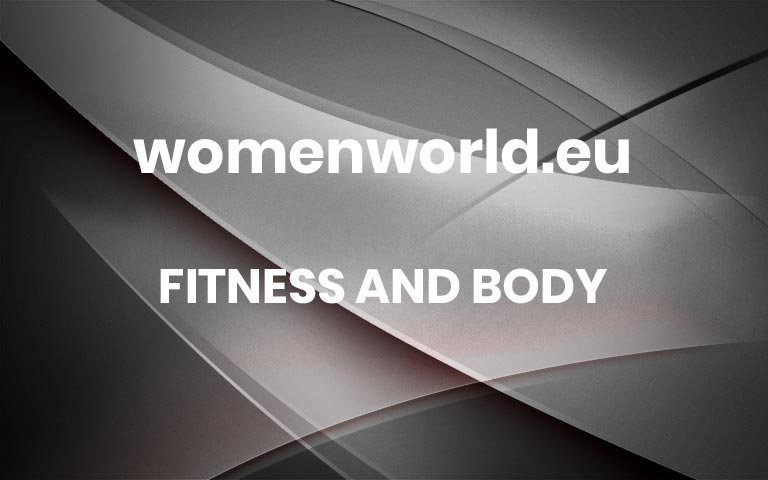Exactly How To Find The Right Exercise For Your Goals
There’s nothing more frustrating than working out really hard and not seeing the results you want. The thing is, different kinds of exercise affect the body differently. So if your goal is, say, to get fitter and run a faster parkrun time, you shouldn’t be concentrating on moves that are more geared towards building strength and muscle. That’s why it’s important to find the best exercises for your goal.
To Get Fit, Try…
Best Exercises: swimming, cycling, spin class, aerobics
If you’re starting to exercise for the first time, it’s a good idea to build your fitness base with an accessible, low-impact activity. Spinning may sound hectic (and it can be!), but you don’t need fancy gear to do it and the adjustable bikes allow you to tailor the class to your own level of fitness. What’s more, “cycling increases your cardio fitness, muscle strength and endurance and joint mobility, while decreasing stress and body fat,” says Ceri Hannan, head of product development at Planet Fitness.
Also great for beginners: Swimming, one of the most underrated but genius low-impact workouts out there. Swimming improves your balance, coordination and posture and comes with low injury risk, says Hannan. Plus, it’s a potent fitness modality, because you’ll be moving against the water as resistance – that’s muscle development – while boosting your heart rate with faster strokes and longer laps.
Another low-option cardio option is bodyweight workouts (hello, old-school aerobic class!). The combination of constant stepping and dynamic arm movements incorporates the entire body, improves coordination, and gets the heart rate way up, improving cardio fitness levels.
If Your Goal Is To Get Strong, Try…
Best Exercises: Callisthenics; strength training; Pilates
Strength training is essential – so kudos for wanting to get strong! Not only does weightlifting build a toned, sexy figure, it also slows down the ageing process, says Hannan. “As we get older, the body naturally loses muscle mass and bone density. Strength training addresses this,” he says.
Multiple modalities in strength training exist: CrossFit classes often offer beginner classes which go over the best lifts and focus on creating great technique – so try one if you’re new to weight training.
If the idea of entering the weights area seems daunting (we don’t blame ya), bodyweight training (a.k.a. callisthenics) is a brilliant way to build strength and lean muscle without lifting a single piece of iron. Plus, you can start working towards cool moves like pull-ups. And, callisthenics also focuses on mobility, so you’ll improve flexibility and all-over strength.
If you’re trying to focus on a stronger core, we can’t recommend Pilates enough. Even without a reformer, Pilates focuses on your breath, coupled with the abdominal muscles, forming the foundation of each movement. Bottom line: you’ll work hard.
READ MORE: Can Pilates Double As Your Strength Training Workout?
To Lose Weight, Try…
Your Best Exercises: High-intensity interval training (HIIT), triathlon training
If you already hit the gym fairly regularly, but you still have a muffin top bulging over your jeans, it’s time to change things up. Might we suggest a bold new goal? “Weight loss may not be what springs to mind when you think of triathlon training, but the combination of swimming, cycling and running – known as cross-training – is a sure way to guzzle calories. And, it will make you fitter than you’ve ever been in your life,” says Hannan. You can do it all indoors in the gym, too.
If it still sounds too hectic, high-intensity interval training (HIIT) is known for fat loss. For the uninitiated, HIIT is made up of short bursts of intense activity that take up maximum effort. Following this, there is a small period of rest for recovery, and then the cycle repeats. Per research, it’s more fun than steady-state cardio and can result in significant body composition (read: weight loss!). Plus, you’ll keep burning kilojoules long after your workout has ended – as in, up to 12 hours later! Yowzer.
READ MORE: This Full-Body HIIT Boxing Workout Is A Crazy Calorie Burner – No Gloves Needed
To Get Flexible, Try…
Your Exercise: yoga
Don’t be fooled into thinking yoga is all deep breathing and zenning out. Getting into those poses will challenge your muscles and do wonders for your flexibility, even if you can’t touch your toes right now. There are many types of yogic practices, too, from Bikram (26 set positions performed in a heated room) to relaxing Yin, fiery Ashtanga and even Pilates fusion. Yoga is also great for addressing anxiety, depression and back pain.
READ MORE: 9 Winter Workout Gear Essentials That Cost Under R500 More



